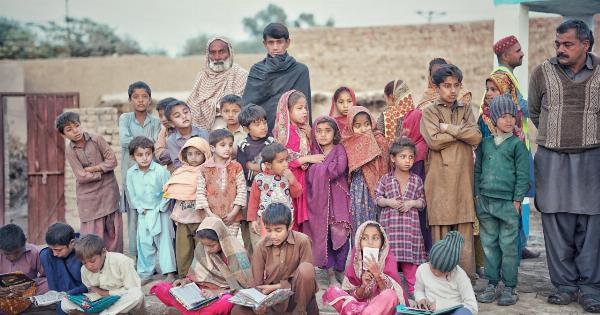Poverty and mental illness have a complex relationship that creates a vicious cycle for many individuals. Poverty leads to mental illness, and mental illness can also lead to poverty.
These two factors are intertwined and often have a compounding effect on a person’s overall well-being. Understanding the relationship between poverty and mental illness is crucial in developing effective strategies to address both.
Poverty and Mental Illness: Understanding the Connection
Poverty and mental illness are closely linked through various mechanisms. Poverty can lead to mental illness by creating stress, isolation, and a lack of access to basic needs such as proper nutrition, housing, and healthcare.
The stress and anxiety that come with living in poverty can contribute to the development of mental health problems such as depression and anxiety disorders.
On the other hand, mental illness can also lead to poverty. People experiencing mental health problems may struggle to find and maintain employment, leading to financial struggles and poverty.
Additionally, the cost of treatment for mental illness can be a significant financial burden for individuals and families, leading to poverty.
Poverty and Mental Illness: The Vicious Cycle
The cycle between poverty and mental illness is vicious. Poverty can lead to mental illness, which can make it difficult for individuals to break free from poverty.
Mental illness can make it challenging to find and maintain steady employment, leading to financial difficulties and poverty.
Living in poverty can exacerbate mental health problems, making it difficult for individuals to access proper healthcare and treatment. This lack of access to care can then lead to a worsening of symptoms and a perpetuation of poverty.
The lack of access to basic needs such as food, water, and shelter can further contribute to mental health problems, creating a cycle that can seem impossible to break.
Breaking the Cycle
Breaking the cycle between poverty and mental illness is not an easy task. However, there are a few strategies that can help individuals and communities to address both issues simultaneously.
Firstly, increasing access to mental health resources is crucial. This can involve expanding mental health services and making them more widely available, particularly in low-income communities.
It can also involve providing mental health support and resources in non-traditional settings such as schools and workplaces.
Secondly, addressing poverty is essential for improving mental health outcomes. This can involve increasing access to basic needs such as food and housing, as well as improving job opportunities and financial resources.
Community-based initiatives, such as job training programs and financial literacy workshops, can also help to address poverty and improve mental health outcomes simultaneously.
The Role of Policy and Government
Policymakers and government officials also play a critical role in addressing the cycle of poverty and mental illness.
Policies that support access to mental health resources, such as expanding Medicaid coverage or increasing funding for mental health research, can have a significant impact on individuals and communities.
Additionally, policies that address poverty, such as increasing the minimum wage or providing income support to low-income individuals and families, can help to break the cycle between poverty and mental illness.
Furthermore, policies that address structural inequalities and systemic issues, such as racism and discrimination, can also help to improve mental health outcomes for marginalized communities.
The Importance of Awareness and Education
Finally, education and awareness are crucial in addressing the cycle of poverty and mental illness.
Educating individuals and communities about the relationship between poverty and mental health can help to reduce stigma and increase access to resources.
Additionally, fostering awareness of the policies and programs that can address poverty and mental health can help to build support for policy change and community-based initiatives.
Conclusion
The relationship between poverty and mental illness is complex and creates a vicious cycle that can be difficult to break.
However, there are tools and strategies that can help to address both issues simultaneously, including increasing access to mental health resources, addressing poverty, and implementing policies that support both.
Ultimately, breaking the cycle between poverty and mental illness requires a comprehensive and multi-faceted approach that involves individuals, communities, policymakers, and government officials all working together.































